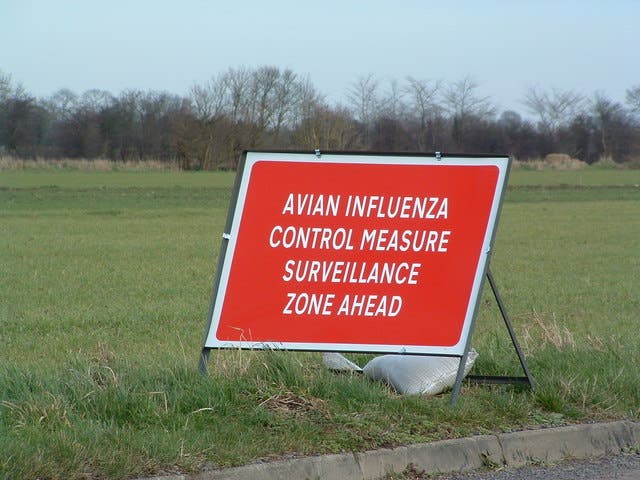While COVID-19 ravaged the world in 2020, another pathogen was flying under the radar. H5N8, a subtype of the highly pathogenic avian influenza virus, has already killed millions of birds worldwide, and shows little signs of stopping.

Weifeng Shi, director and professor at the Institute of Pathogen Biology at Shandong First Medical University in China, and George Gao, head of Chinese Center for Disease Control and Prevention, published a concerning new article in Science, where they warn that “the global spread of H5N8 avian influenza viruses is a public health concern.”
The H5Ny influenza strains were described in 1996, and several clades have been discovered since.
In December 2020, an outbreak of the avian flu was reported in Russia. Seven workers on a farm in Russia showed signs of infection — the first time the H5N8 was ever found in humans.
These pathogens don’t normally infect humans, but according to the World Health Organization, there have been a total of 862 laboratory-confirmed human cases of infection with H5N1 — although no human-to-human transmission has even been documented, and it’s believed that cases probably arose through close human-bird interaction. However, researchers have previously shown that some strains can be passed to other animals through respiratory droplets, which “is indicative of the pandemic potential of H5Ny”, write Shi and Gao — pointing to the recent events from 2020. But the fact that more and more members of the H5Ny seem to be able to jump to humans is just the start of the problem.
While 2020 saw a sharp decrease in human influenza cases, the opposite trend happened in birds. Many of the avian influenza safety checks that were in place before were dropped with the novel pandemic, and it’s showing.
A number of H5Ny strains (including the H5N1 and the H5N8 subtypes) spread through China, Europe, South Africa, and plenty of other places. Shi and Gao — who were among the first scientists to describe the pandemic-causing SARS-CoV-2 — warn that a clade of H5N8 called 2.3.4 has become the dominant pathogen worldwide, and this is one of the clades most predisposed to jump to humans. Because it can affect migratory birds, it can also spread quickly around the world.
“Because of the long-distance migration of wild birds, the innate capacity for reassortment of Avian Influenza Viruses (AIV), the increased human-type receptor binding capability, and the constant antigenic variation of HPAIVs, it is imperative that the global spread and potential risk of H5N8 AIVs to poultry farming, avian wildlife, and global public health are not ignored,” Shi and Gao write.
The two researchers call for authorities and farmers to step up surveillance measures and pay more attention to these pathogens — before it’s too late.









